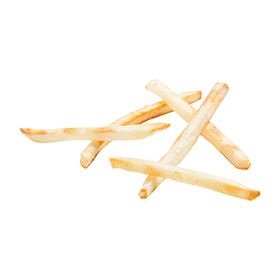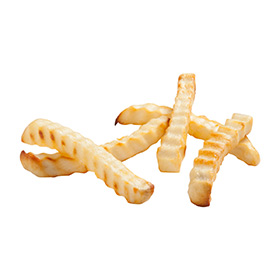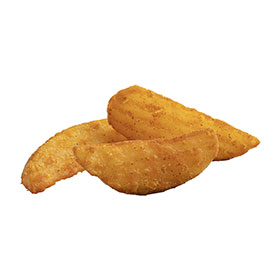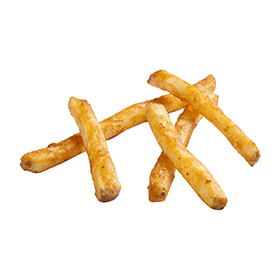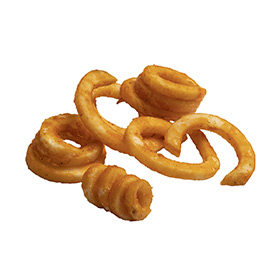K-12 | French Fries
How to Make Frozen Fries Crispy in the Oven
Apr 27, 2023
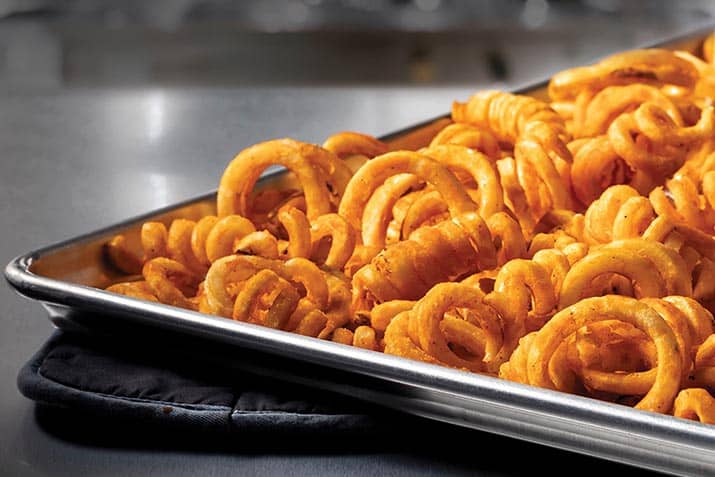
Baking frozen french fries is a must in K-12 foodservice. (Can you think of anything your students love more?) But transforming frozen potato strips into crispy, golden fries isn’t always simple in ovens. Little things make a big difference. And, let’s face it, not every fry was designed to be baked.
In this article, you’ll learn how to make frozen fries crispy in the oven in a way that rivals the best your K-12 students have enjoyed in restaurants. And we’ll share some of our favorite bakeable french fry recommendations.
Baking frozen french fries: 8 steps to better results
Deep fryers have one advantage over ovens: when the boiling oil heats the potato strips, the water inside the fries evaporates, rises into the air and dissipates, or is whisked away by the hood over the fryer.
During baking, the frozen fry moisture also evaporates. However, much of it remains trapped inside the oven. And that elevated humidity plays havoc with texture, reducing crispness. So baking frozen french fries is really about managing and mitigating the moisture generated during cooking.
Here are eight tips for the best possible baked french fries:
- Preheat your oven. Keep the oven shut as much as possible to reach cooking temperature faster.
- Use a perforated sheet tray. This helps hot air circulate more easily among the fries, increasing crispness.
- Don’t thaw your fries before baking. We get it: you’re trying to shorten cook time. But thawed fries turn into soggy fries. For best results, keep your frozen fries frozen until you’re ready to cook them.
- Bake two bags or less per tray. Remember, fries are full of water. The more fries you add to a tray, the more steam they’ll be releasing in your oven, reducing crispness.
- Load the oven quickly. This prevents heat loss that can result in soggy fries.
- Place trays on every other rack. Airflow is the key to maintaining cooking times. Too many trays in the oven reduces air circulation. Instead, only load fries on every other rack.
- Use heat lamps or holding cabinets with vents that release moisture. Humidity is the enemy of crispy fries!
- Use shallow holding pans for serving to disperse moisture after cooking. Shallower holding trays promote greater air circulation, helping disperse the steam from cooked fries better than deeper pans.
Only use fries that are specifically designed for baking
Of all the best practices, this is the most important: only use fries designed to be baked. Bakeable french fries (sometimes called “ovenable” fries) are specially made to deliver great results whether baked or fried.
Here are our favorite frozen fries for baking in ovens:
Unseasoned Bakeable Fries
Simplot Tater Pals® unseasoned fries bake up crisp and golden every time. These Grade A ovenable fries never disappoint!
Simplot Tater Pals® Ovenable Shoestring Fries
Simplot Tater Pals® 1/2” Ovenable Crinkle Cut Fires
Seasoned/Battered Bakeable Fries
Seasoned with paprika, onion and garlic, Simplot Tater Pals® savory fries deliver bold flavor with far less sodium than regular seasoned fries.
Simplot Tater Pals® Savory Reduced Sodium 10-Cut Wedges, Skin-On
Simplot Tater Pals® 5/16" x 3/8" Savory Reduced Sodium Fries, Skin-On
Simplot Tater Pals® Savory Reduced Sodium Loops
Baking frozen french fries: The crisp is worth the effort
Fries are undoubtedly one of the most popular items on any K-12 menu. And thanks to fast-food restaurants, your students are experts on how great fries look and taste. Now that you know how to make crispy fries in the oven, you can ensure they live up to student expectations—and keep kids coming back.



